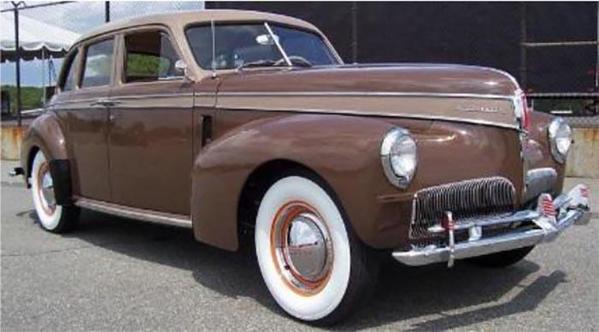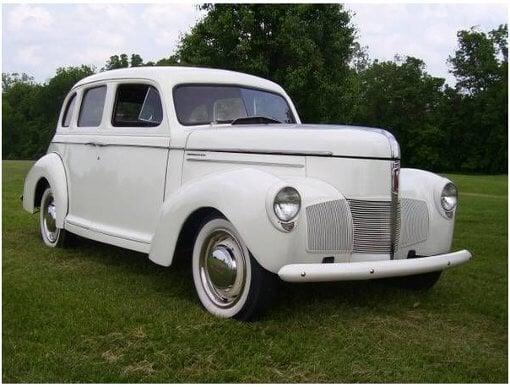“Deliver more than promised”
Studebaker History Part I Pre WWII
Shortly after settling in South Bend Indiana in 1852 the two of the five Studebaker brothers Henry and Clement established a woodworking and blacksmith business. Meanwhile a third brother John M went to California to prospect for gold. He found it more profitable to make wheelbarrows for the miners. By 1858 Wheelbarrow Johnny, as he became known, had amassed a good sum of money and returned to South Bend and invested in his brother’s business. The wagon building business started slowly but by 1860 they secured contracts from the Union Army and by 1867 they were producing 6000 vehicles a year. The developed a national dealer and marketing network.
All five of the brothers would have their hand in the business over the years but by 1901 John M was the only one still alive. At the dawn of the auto age they built bodies for some of the horseless carriage manufactures and in 1902 they introduced their own electric vehicles. By 1904 they entered into an Agreement with Garford to market their automobiles as Studebaker-Garfords through their dealer network. In 1908 they reached an agreement with EMF to market their automobiles as well. Studebaker eventually got controlling interest then began marketing EMF cars as Studebakers. By 1920 Studebaker divested its wagon business and consolidated its auto manufacturing in South Bend.
The 1920s were good years for Studebaker, their cars were well made medium priced automobiles. In 1927 they introduced the Erskin to compete in the low price market but because their manufacturing cost were priced to high to compete successful. By 1929 they were rebranded as a Studebaker Six. In 1926 they introduced the President 8 the Classic Car Club of America certified 1927 to 1932 Presidents as Classics. Studebaker also purchased luxury automaker Pierce Arrow in 1929. It was a good idea but on the eve of the depression was bad timing.
In 1931 Studebaker started developing their light and medium duty trucks and got control of White Motors. In 1932 they introduced the Rockne, named after famed Knute Rocknie, the Notre Dame football coach to compete in the low priced field. The car was a good value but the depression killed it by 1933. That year Studebaker declared bankruptcy and was reorganized under chapter 11. The new management sold Pierce Arrow and their White Motor stock to raise capitol. For 1937 Studebaker introduced new styling with all steel bodies. They were handsome cars but they reduced the number of models The 8 cylinder Presidents were still fine automobiles but not in the class of the ’26 to ’32 versions. To stay viable Studebaker wanted still wanted to market in the low priced range. For 1939 they created the Champion, an all new bumper to bumper design. That shares almost nothing with the senior models. It was so well designed that it was 300 pounds lighter than contemporary Fords and Chevys and cost less to operate. By 1941 Studebaker doubled sales. All models continued with only trim changes until production was stopped in January 1942 for war production. During WWII they produced Wright Cyclone aircraft engines, the tracked all terrain Weasel and thousands of military U6 Closed cab trucks, most of which went to the Soviet Union. After the war, the Russians copied the designs and they became the backbone of the Soviet military and civilian truck fleet.
Here are some 1/43 prewar models.
1931 President by Brooklin
1934 Studebaker Commander Land Cruiser by Brooklin
1935 Pierce-Arrow by Brooklin
1935 Studebaker Dictator by Brooklin
1941 Studebaker Champion by Western
This has the Paint Line two-tone option
1941 Studebaker President by Esval (Available soon)
The Presidents and Commanders were much larger than Champions
Next week Part II Post WWII





















